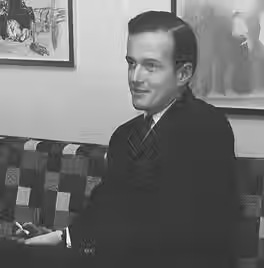Valerie Capers
- Corte Swearingen
- Nov 12, 2023
- 4 min read
Updated: Apr 21

Valerie Capers, an American composer and pianist, has carved an indelible mark on the landscape of contemporary jazz and classical music. Born on May 24, 1935, in New York City, Capers' life journey is a testament to her unwavering passion for music, her resilience in the face of adversity, and her pioneering spirit in breaking down barriers for people with disabilities.
From a young age, Valerie Capers exhibited an extraordinary affinity for music. Raised in a household where her father, a skilled pianist, played jazz and classical tunes, she absorbed the diverse sounds that would later shape her unique musical voice. However, her life took a challenging turn at the age of six when a tragic accident left her blind. This setback, rather than deterring her, only fueled her determination to pursue her musical dreams.
Capers' formal education in music began at the New York Institute for the Education of the Blind, where she honed her skills as a pianist. She later attended the Juilliard School of Music, where she earned a Bachelor's degree in music and a Master's degree in music education. Throughout her studies, she demonstrated an exceptional talent for both classical and jazz genres, showcasing her versatility as a musician.
In the 1960s, Valerie Capers emerged as a prominent figure in the jazz scene, performing alongside jazz legends such as Dizzy Gillespie and Max Roach. Her piano skills and improvisational prowess earned her respect and recognition among her peers. Capers' ability to seamlessly blend classical and jazz elements in her compositions became a hallmark of her style, setting her apart in the music world.
Beyond her accomplishments as a performer, Valerie Capers made significant contributions as a composer. Her compositions, ranging from solo piano works to chamber music, reflect a deep understanding of both classical and jazz traditions. Some of her notable compositions include "Sing About Love," "Sojourner," and "Nebulae." Her music often explores themes of love, resilience, and the human spirit.
Valerie Capers' impact extends beyond her musical achievements. As an advocate for accessibility and inclusion, she has been an inspiration for individuals with disabilities, demonstrating that talent knows no physical boundaries. Her commitment to breaking down barriers for blind musicians led her to co-found the Jazz in the Schools program, aiming to bring jazz education to visually impaired students.
Throughout her illustrious career, Valerie Capers has received numerous awards and honors, including the prestigious National Endowment for the Arts Jazz Masters Fellowship. Her influence as a musician, educator, and advocate continues to resonate, leaving an enduring legacy in the world of music.
Valerie Capers' life story is a testament to the power of music to transcend adversity, the limitless possibilities of human potential, and the enduring spirit of a woman who refused to be defined by her circumstances. Through her artistry and advocacy, she has left an indelible mark on the American musical landscape, enriching the lives of all who have had the privilege of experiencing her work.
Selected Performances
Blue-Bird (1976) - “Blue-Bird” is a movement from Valerie Caper’s fabulous piano suite titled “Portraits of Jazz,” published in 1976. Each of the twelve pieces is inspired by or dedicated to a particular jazz musician or singer.
"Blue-Bird" is dedicated to the legendary Charlie "Bird" Parker, and represents a chromatic blues composition spanning twelve bars. Written in the bebop style, the piece spans about two pages, showcasing extended melodic lines with nuanced rhythmic intricacies. To capture the essence of swing and movement, the performer is encouraged to boldly emphasize offbeat lines and chords in the left hand. Mastering this composition offers students a deeper insight into Charlie Parker's distinctive style, necessitating a familiarity with his work to convey his influence and navigate the rhythmic challenges he presents.
For the pianist, the piece poses various challenges. Achieving a quick, nimble, and clean sound in the right hand is crucial, marked by frequent off-beat accents and a light swing. Harmonies in the left hand often coincide with the off-beats, demanding a strong rhythmic sense to maintain a steady pulse without succumbing to heaviness or sluggishness.
Billie's Song - “Billie’s Song” was composed as a tribute to legendary jazz vocalist Billie Holiday. It is the opening movement of her piano suite Portraits in Jazz.
Written in a lyrical and expressive style, “Billie’s Song” evokes the emotional depth and vocal inflections that defined Holiday’s singing. Capers weaves a melodic line that suggests Holiday’s phrasing—intimate, blues-tinged, and subtly syncopated—while maintaining a classical structure accessible to pianists in a recital or pedagogical context. The piece is not a direct quotation of any one song from Holiday’s repertoire but rather a personal homage that captures her spirit through tonal color and nuanced rubato.
Valerie Capers Interview - Here's a short video of Valerie Capers discussing her early education and career.
Locating the Music
While Caper's only composed one piano suite, "Portraits of Jazz," it is widely available from sheet music sites, including Sheet Music Plus.
List of Solo Piano Compositions
Portraits of Jazz (1976)
- Ella Scats The Little Lamb
- Waltz For Miles
- Sweet Mister Jelly Roll
- The Monk
- Blues For 'The Duke'
- A Taste Of Bass
- Billie's Song
- Mr. 'Satchmo'
- Cancion De La Havana
- Bossa Brasilia
- Blue-Bird
- Cool-Trane


